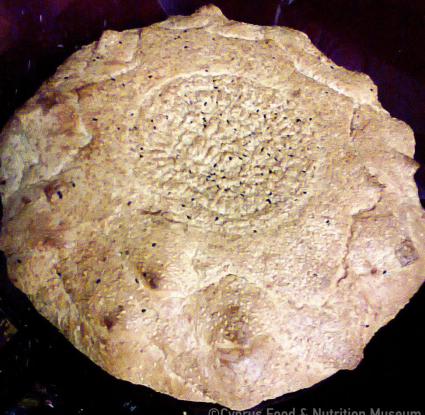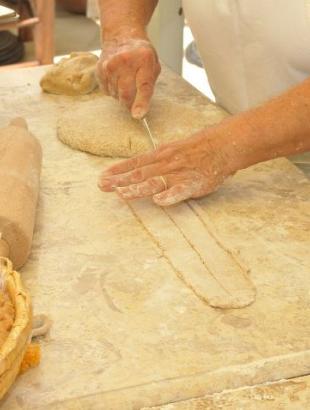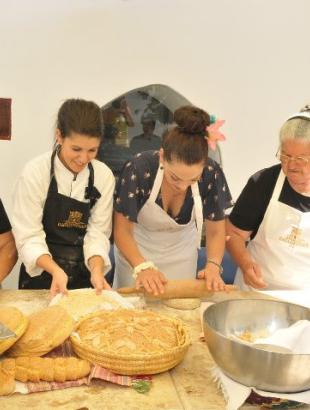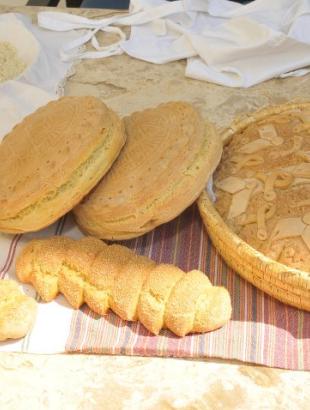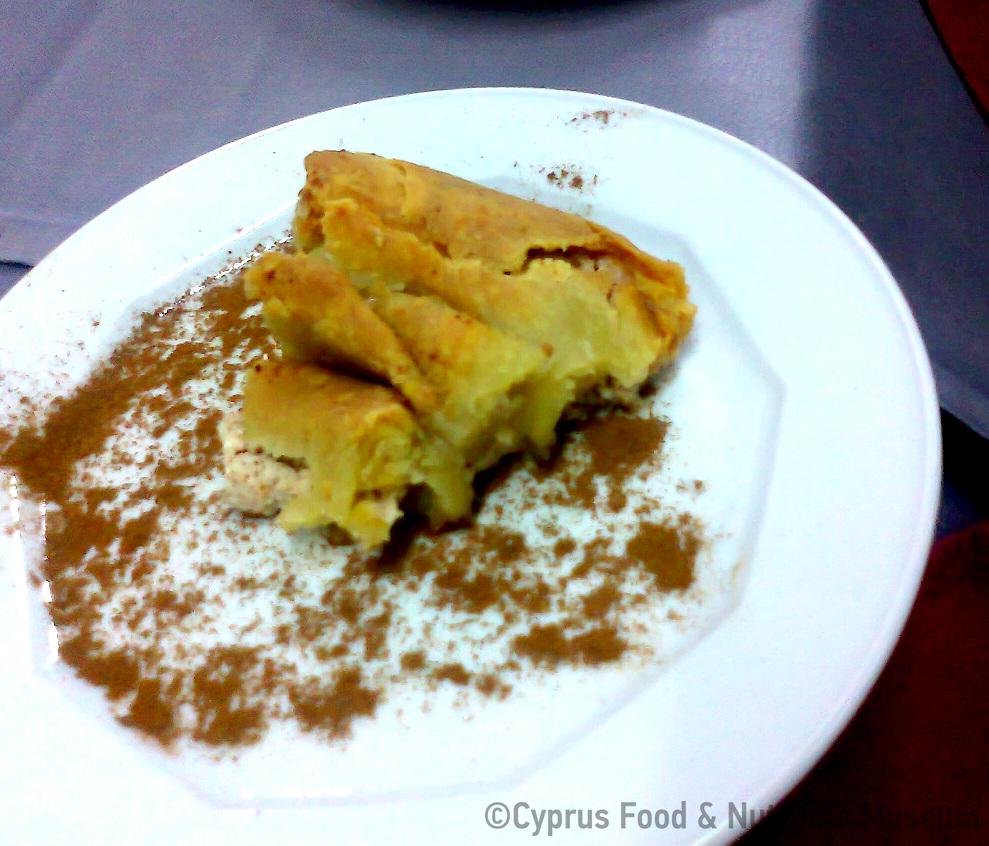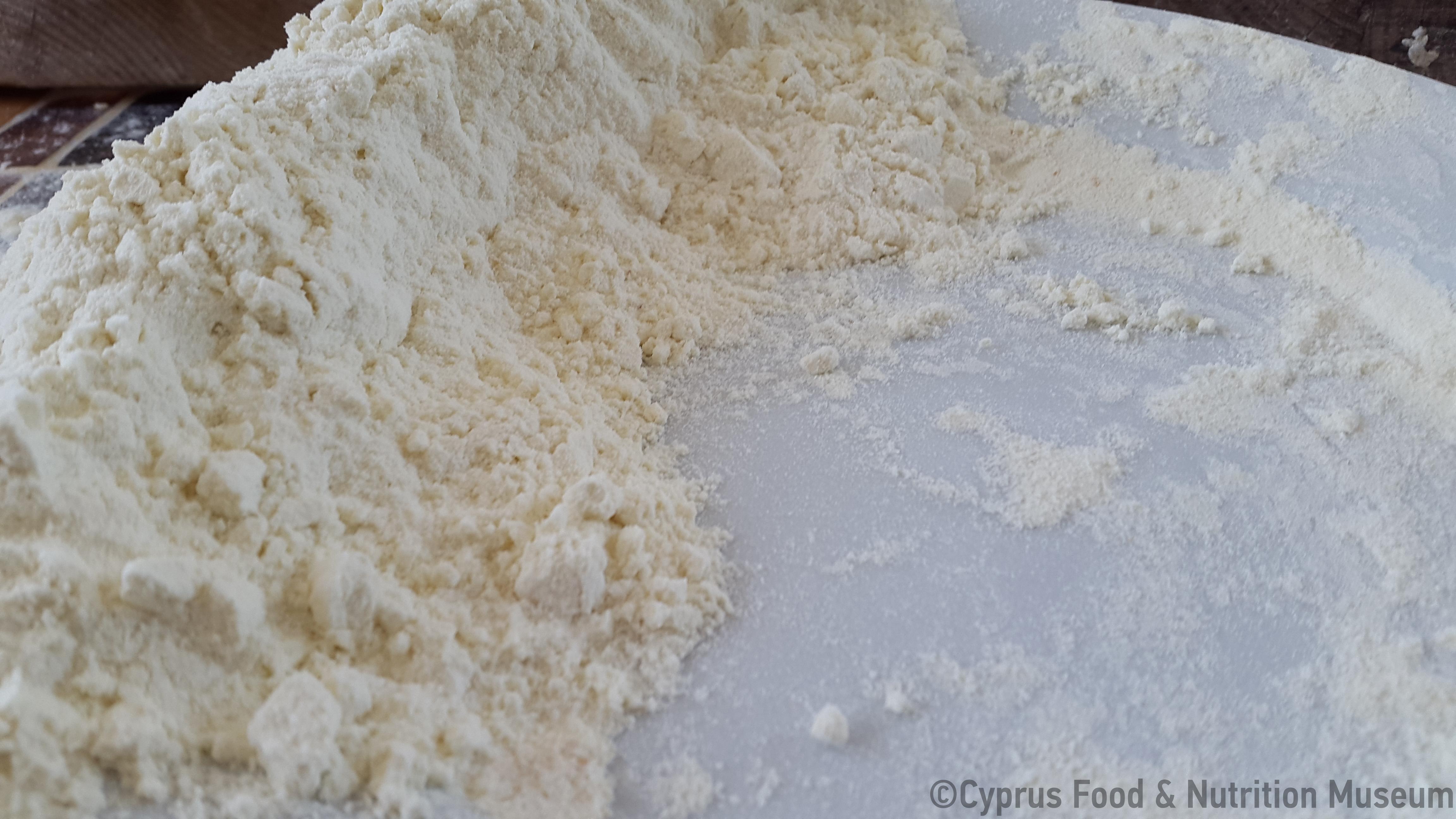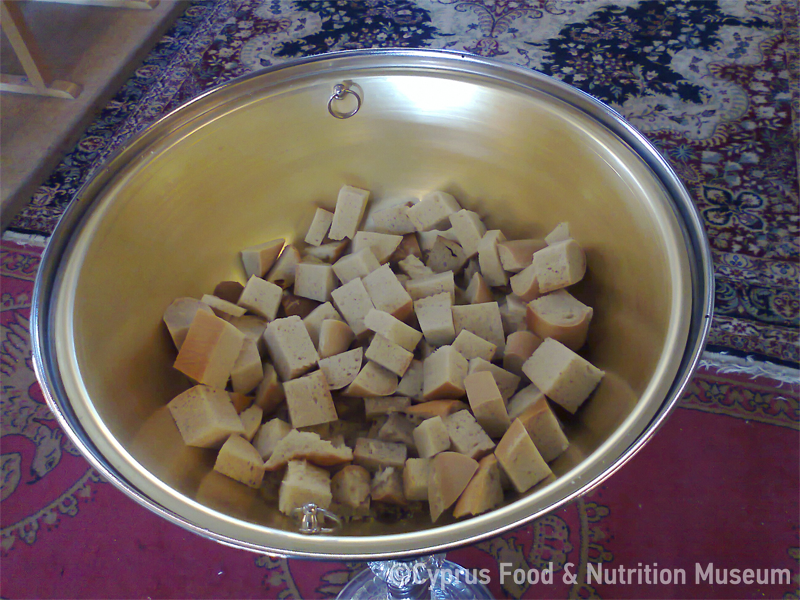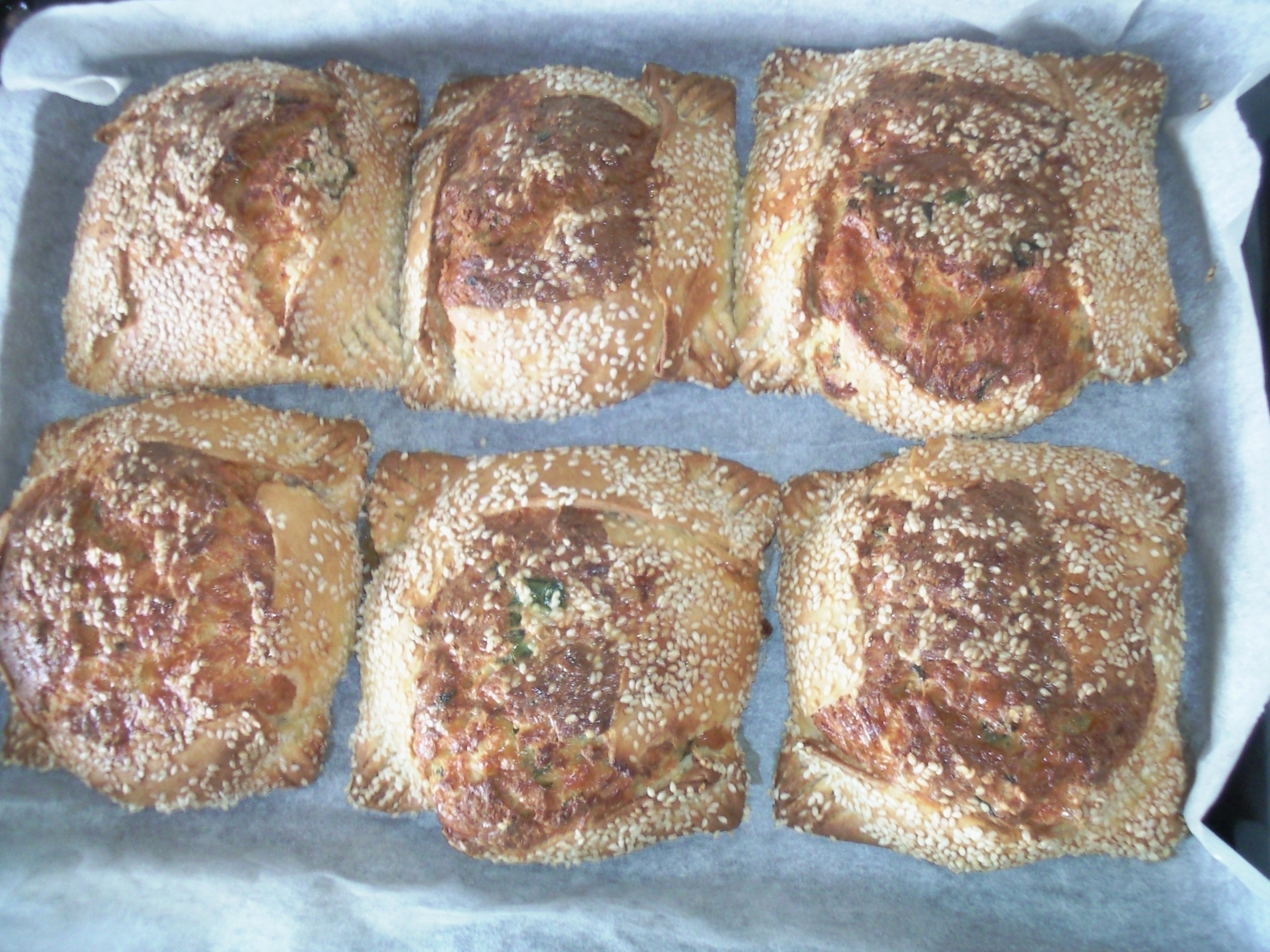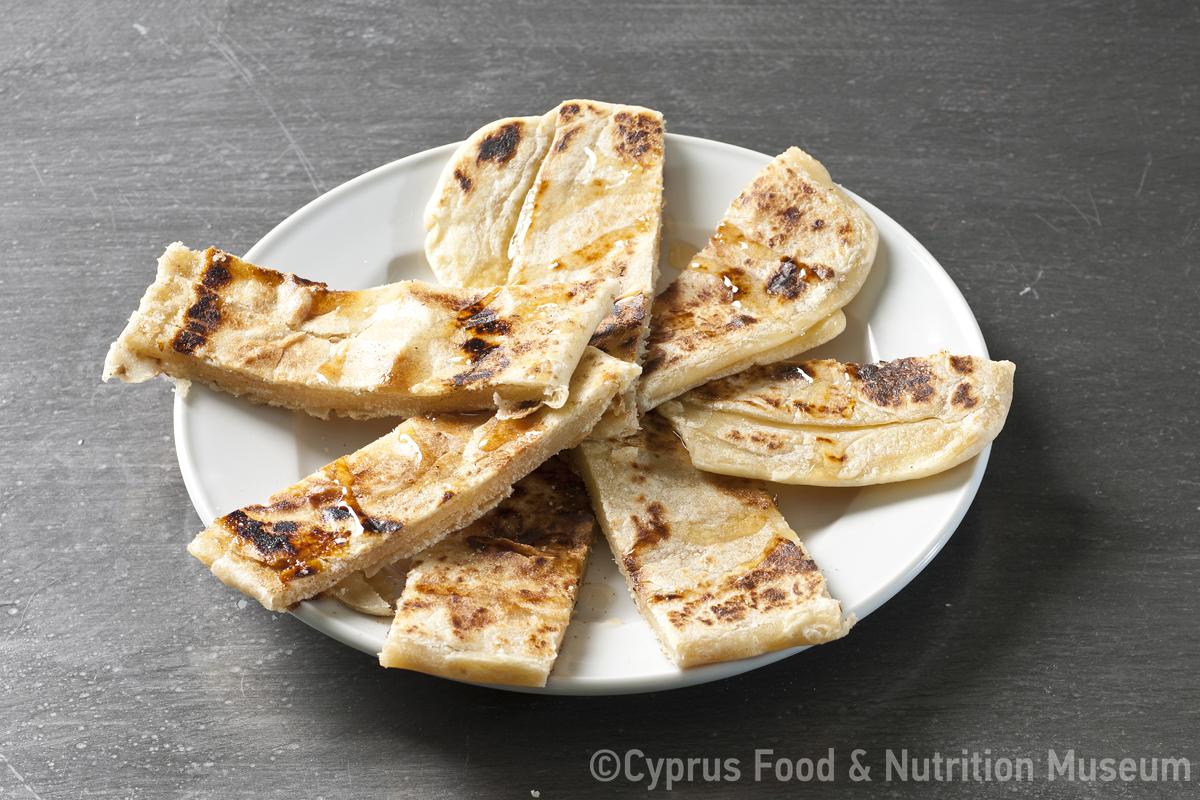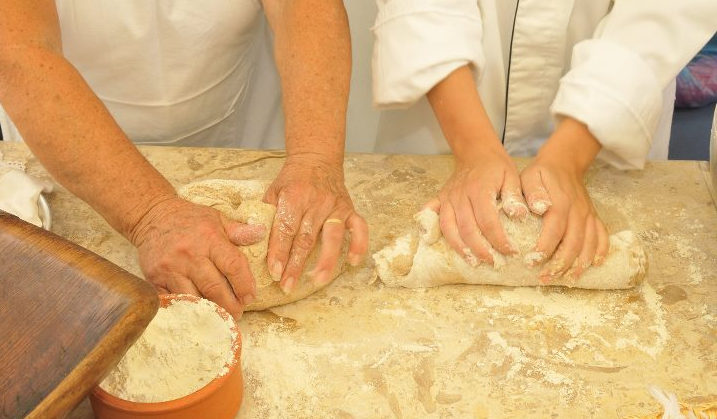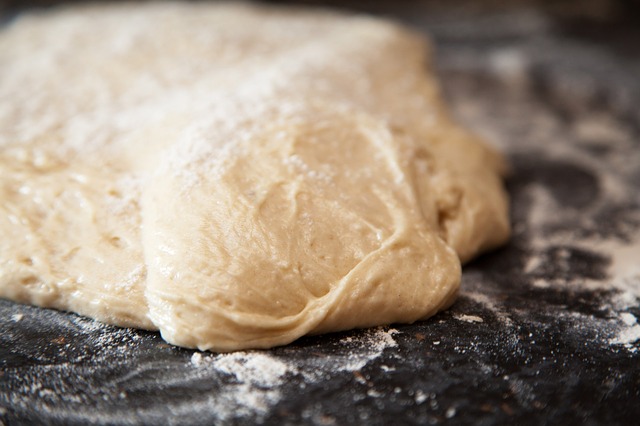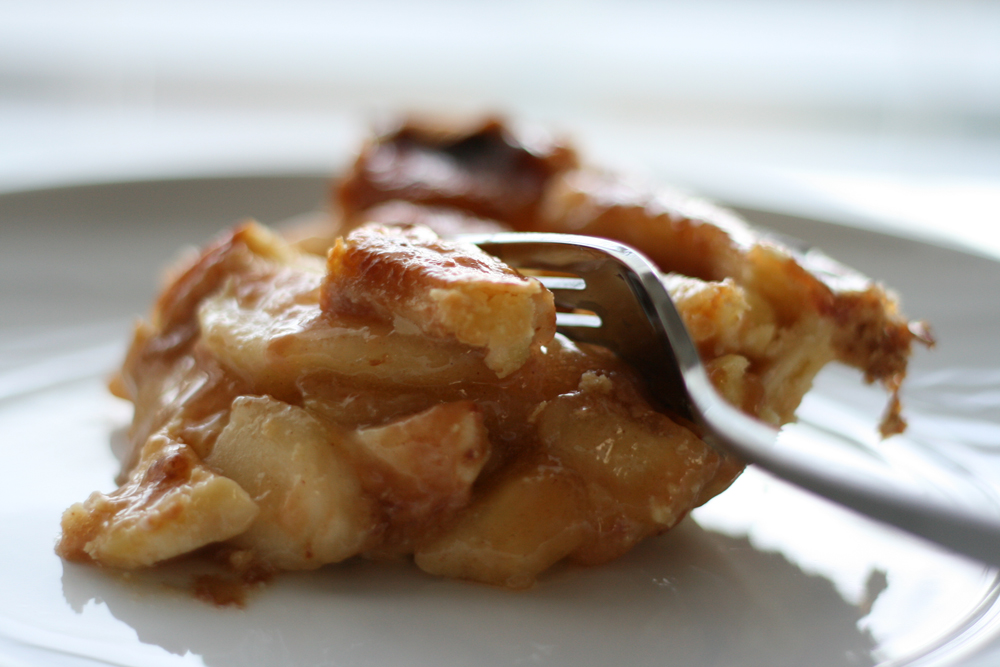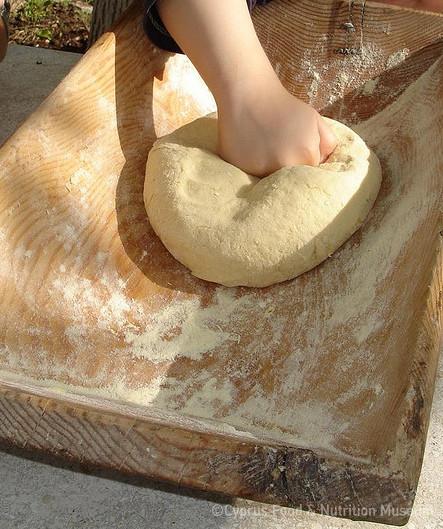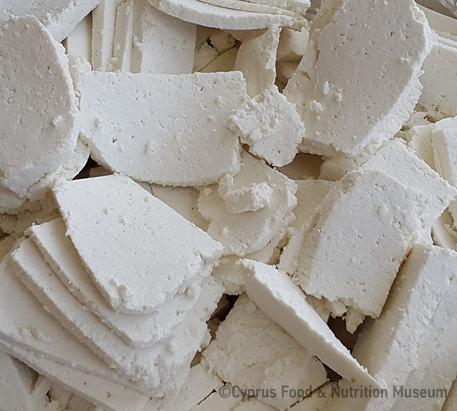“…place it in a paneri (basket) which contains sesame and aniseed until it is coated all over. Place it back on the board and give it its final round shape. Finally, use a knife to score the perimeter”. (Flourou K. Parpouna, Lysi)
Name - Recipe
Παννυχίδα.
Sourdough (orange size)
Flour as far as needed
1 glass of sugar
½ tsp. salt
1 tsp ground mastic
1 tsp ground cinnamon
1 tsp of aniseed
1 tsp ground mahleb
2 cups of hot water (use as much as needed)
Sesame as much as needed
In a basin, put the water, salt and sugar and dissolve the sourdough in them. Then add the flour (as much as it takes) and the aromatics (mastic, cinnamon, mahleb, aniseed). Start kneading the ingredients to form a dough - not as stiff as that of the prosphoro. Then cover it and leave it aside for 10 minutes. Next, cut the dough and on the board, give it a round shape. Then place it in a paneri (basket) which contains sesame seeds and aniseed in it until it is coated all over. Place it back on the board and give it the final round shape. Use a knife to score around the perimeter and leave it to proof. Preheat the oven for 15-20 minutes on high heat. Place the pannihida on a baking tray lined with parchment paper and put it in the oven (middle level). After 20 minutes place a bowl with water on the bottom level of the oven so that the pannihida does not burn. After 10 minutes, replace the baking tray with aluminium foil and place the pannihida (with the parchment paper) on it and back in the oven. At this point, lower the oven temperature to about half of what it was. In about 1 hour and 10 minutes the pannihida is ready (Flourou K. Parpouna, 80 years old, Lysi).
Baking in the oven
Functional and symbolic role
People take pannihida to the church on the great feasts, to honour the patron saint of each house. Usually, once or more times a year, every Cypriot family had a feast to thank the divine faces of Christ, the Virgin Mary and the saints and to honour them either because one of the members of the family had their name (it was their name day) or because they had a taman (offering/oblation) or because the feast had been preserved hereditarily (from the parents' house and the children continued celebrating it).
For every home the feast was one of the most formal days of the year. The people who were celebrating on that day, would meet all their religious obligations towards the church with religious reverence and strictly observed the established rules, both for the evening service of the eve of the feast and for the service of the day of the feast. These religious obligations were dominated by the offering to the divine, which was the loutourka, usually four prosphora or one for the holy intention, the pentartin, four loaves of bread and a larger one for the artoklasia, and two pittes or pannihides (Kypri and Protopapa 2003).
Additional information and bibliography
Kypri, Th.D. and Protopapa, K.A. (2003). Traditional bread and pastry of Cyprus (Publications of the Centre for Scientific Research XVIII), Centre for Scientific Research, Nicosia.
Oral testimony: Flourou K. Parpouna, 80 years old from Lysi. Recording: Christiana Parpouna, October 2010. Edited by Stalo Lazarou.
Christiana Parpouna. Stalo Lazarou

